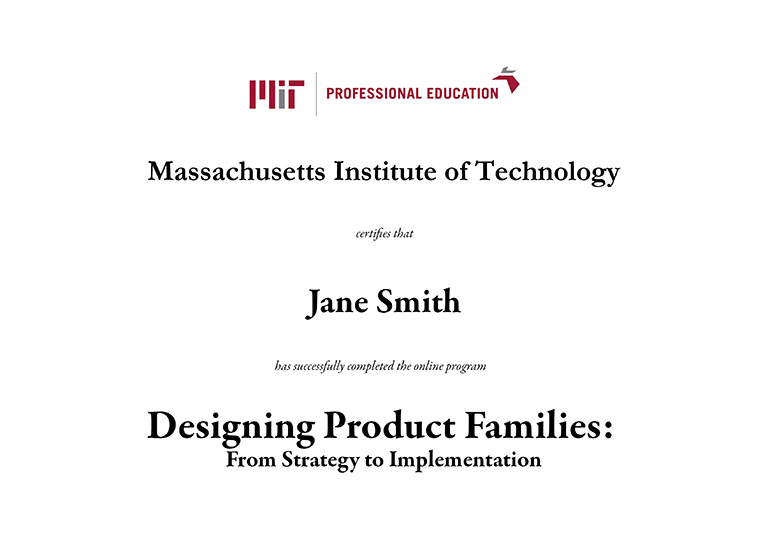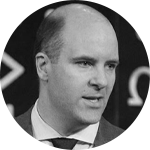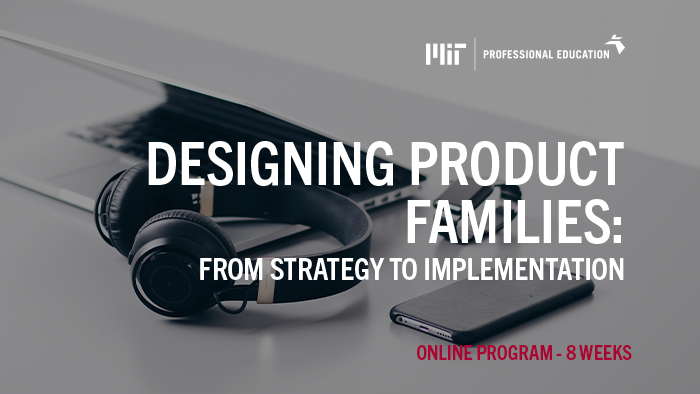This course is part of our Professional Certificate Program in Industry 4.0 and Professional Certificate Program in Product Management
Personalization: the new mantra of the manufacturing industry
Today’s highly competitive marketplace is changing the way organizations do business. The speed of innovation and mass customization offers new competitive advantages.
In response, organizations must implement strategies to design and develop product families on a common platform, meeting various customer requirements and harnessing the power of economies of scale.
Your organization’s growth in today’s competitive marketplace will depend heavily on a strategy that optimizes all stages of product creation, from architecture implementation and management.
94%
94% of the Fortune 1000 reported supply chain disruptions this year.
Source: Fortune
30%
Product development time dropped by 30 % due to optimizing product families.
Source: NCDPD
20%
An efficient product platform shows cost savings of up to 20%.
Source: PwC
An online course for optimizing your product strategy
Exploring how product architecture, platforms, and commonality can help you successfully deploy and manage a family of products.
The skills you will develop
1.
You will leverage platforms
for identifying new market and product opportunities to generate revenue growth.
2.
You will understand the platform concept
and be able to prioritize drivers of modularity and product platform design.
3.
You will identify major contemporary methods
and tools for product family and platform design.
4.
You will understand how benchmarking
can assist platform and product family design.
5.
You will understand the evolution of the industry
from craft manufacturing to mass customization.
6.
You will grasp fundamental concepts in product architecting
such as architectural decisions, decomposition and function-form mapping during conceptual design.
7.
You will enumerate metrics
for quantifying commonality within a product family.
8.
You will understand organizational issues
such as divergence in platforms and management roles in platforms.
In addition, you will receive a Certificate of Completion
All the participants who successfully complete the online course Designing Product Families: From Strategy to Implementation will receive an MIT Professional Education Certificate of Completion. Furthermore, participants will receive * MIT Continuing Education Units (CEUs)*.
To obtain CEUs, complete the accreditation confirmation, which is available at the end of the course. CEUs are calculated for each course based on the number of learning hours.
* The Continuing Education Unit (CEU) is defined as 10 contact hours of ongoing learning to indicate the amount of time they have devoted to a non-credit/non-degree professional development program.
To understand whether or not these CEUs may be applied toward professional certification, licensing requirements, or other required training or continuing education hours, please consult your training department or licensing authority directly.

This course is aimed at
- ENGINEERS
- RESEARCH AND DEVELOPMENT DIRECTORS
- PLATFORM ARCHITECTS
- PRODUCT LINE MANAGERS
in positions of responsibility.
- PLATFORM AND SYSTEMS ENGINEERS
from industry or public administration.
- PROFESSIONALS WHO HAVE A NEED TO CREATE PRODUCTS,
services, and systems that create choice and variety in a competitive marketplace.
- PROFESSIONALS WHO ARE INTERESTED
in understanding how to define modular and scalable product architectures, utilizing standardization, customization, and platform leveraging strategies to maximize cost savings while increasing the capability to offer a variety of customized systems and products.
Meet the instructors of this course
Listed in alphabetical order
PROF. OLIVIER DE WECK
Professor of Aeronautics and Astronautics and Engineering Systems, MIT

“Product Platform and Product Family design is where market dynamics, strategy, R&D and manufacturing intersect in complex ways that determine the long-term success and survival of firms”
Learn more
Olivier de Weck is a leader in systems engineering research. He focuses on how complex man-made systems such as aircraft, spacecraft, automobiles, printers, and critical infrastructures are designed and how they evolve over time. His main emphasis is on strategic properties that have the potential to maximize lifecycle value. Since 2001 his group has developed novel quantitative methods and tools that explicitly consider manufacturability, flexibility, commonality, and sustainability among other characteristics. Prof. de Weck’s teaching emphasizes excellence, innovation, and bridging of theory and practice.
Prof. de Weck holds degrees in industrial engineering from ETH Zurich and aerospace systems engineering from MIT. Before joining MIT, he was a liaison engineer and later engineering program manager on the F/A-18 aircraft program at McDonnell Douglas.
Furthermore, de Weck has recently published a textbook outlining Technology Roadmapping, in both its development and practice, and illustrates the underlying theory of, and empirical evidence for, technologic evolution over time afforded by this strategy. Find more information here: Technology Roadmapping and Development
DR. BRUCE CAMERON
Director, System Architecture Group at MIT

“The best companies in the world use platforms to compete – Apple uses it to offer different sized iPhones, BMW uses it to give you the choice of two and four-door models. The key to this strategy is understanding how to tell the difference between consumer choice and reinventing the wheel”
Learn more
Dr. Bruce Cameron is the Director of the System Architecture Lab at MIT and a co-founder of Technology Strategy Partners, a consultancy. His research interests include technology strategy, system architecture, and the management of product platforms. Previously, Dr. Cameron ran the MIT Commonality study, a 30-firm investigation of platforming returns, which concluded that firms face systemic downward pressure on commonality, partially resulting from challenges capturing the costs of variety. Dr. Cameron has supervised over 50 graduate students, and has directed research projects for Amazon, BP, Sikorsky, Nokia, Caterpillar, AMGEN, Verizon, and NASA. Dr. Cameron teaches the System Architecture core class for the System Design and Management program, where he has taught over 500 students. Dr. Cameron’s teaching in Sloan Executive Education has been tied for the highest rated Executive Education program at MIT for several years. Additionally, Dr. Cameron is the Faculty Director for MIT’s Architecture and System Engineering online certificate, which has taught over 5,300 participants.
PROF. TIMOTHY W. SIMPSON
Professor of Mechanical Engineering and Industrial Engineering

Learn more
Timothy W. Simpson is a Professor of Mechanical Engineering and Industrial Engineering at the Pennsylvania State University. He holds affiliate appointments in Engineering Design and the College of Information Sciences & Technology. His research interests include product family design and platform-based product development, multidisciplinary design optimization, trade space exploration, and additive manufacturing. He has over 250 publications in peer-reviewed journals and conference proceedings and he is the lead editor on two books, Product Platform and Product Family Design: Methods & Applications (2005) and Advances in Product Family and Product Platform Design: Methods & Applications (2013). His research has been supported by a variety of federal and state agencies, including NSF, ONR, DARPA, EDA, and DCED, as well as numerous companies, ranging from startups to multi-national corporations. He has worked with over 30 different companies to apply his research methods to improve their product lines and product development practices, and he helped establish and manage the Product Platforms Group on LinkedIn.



